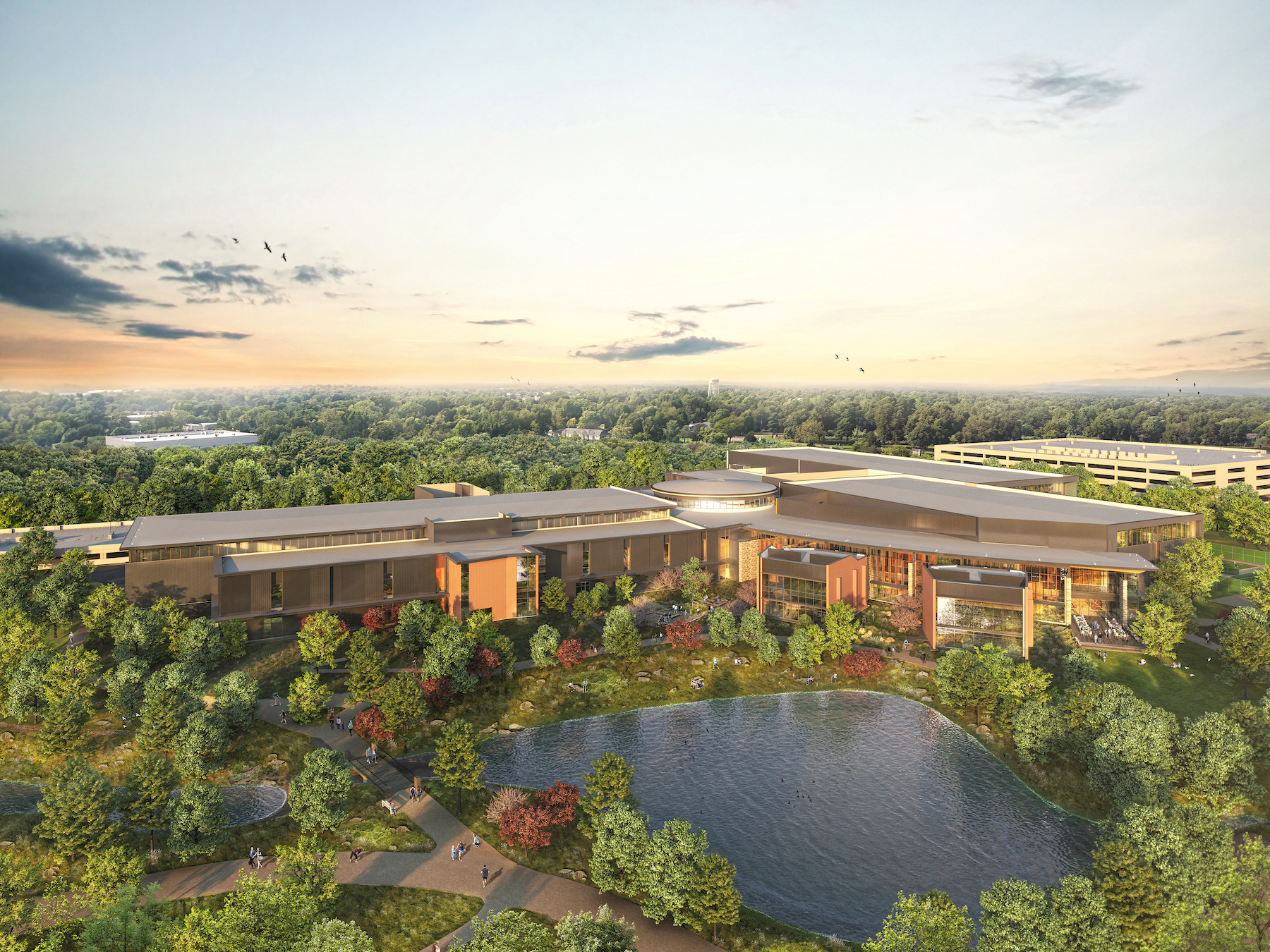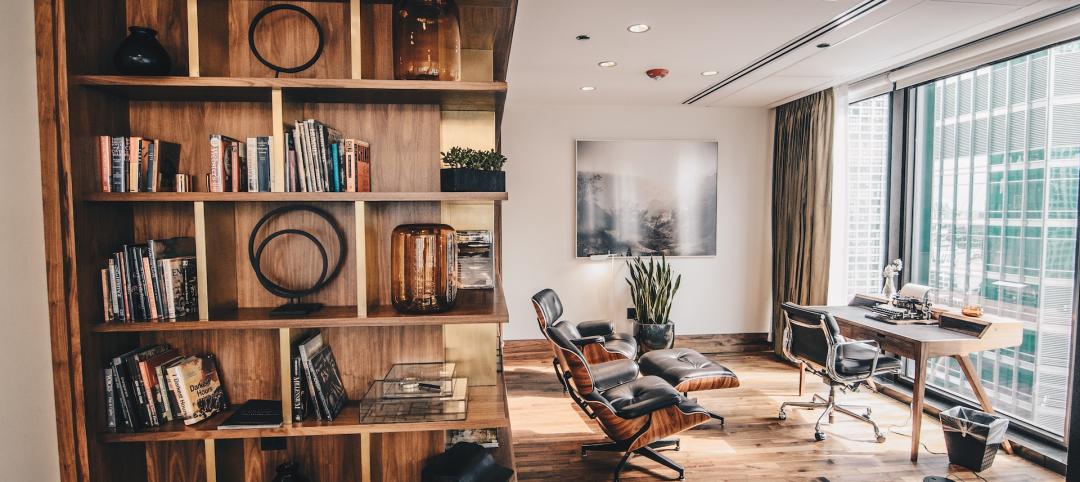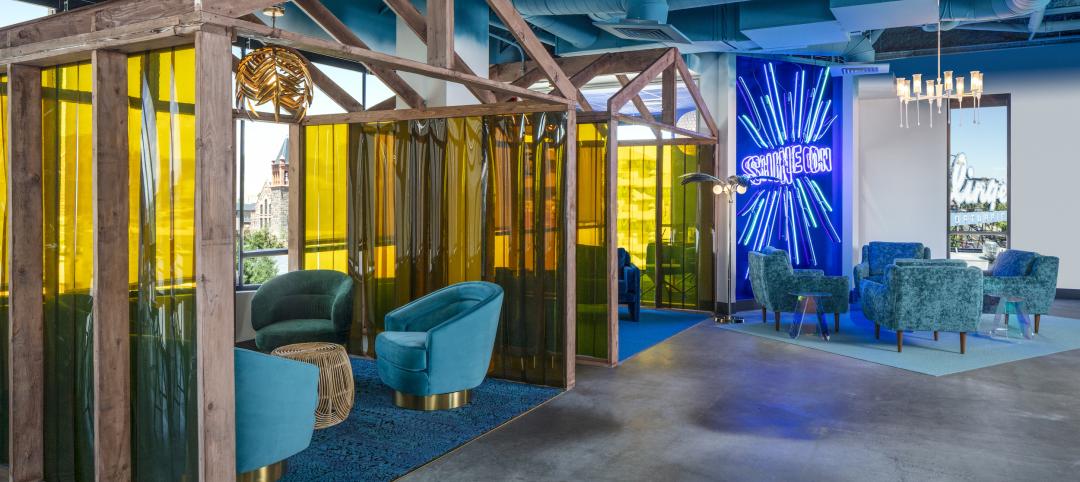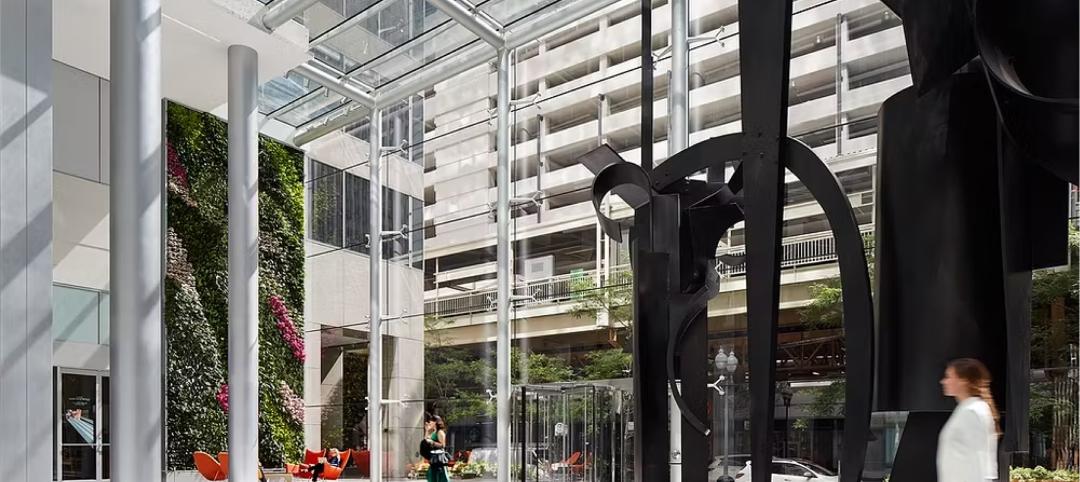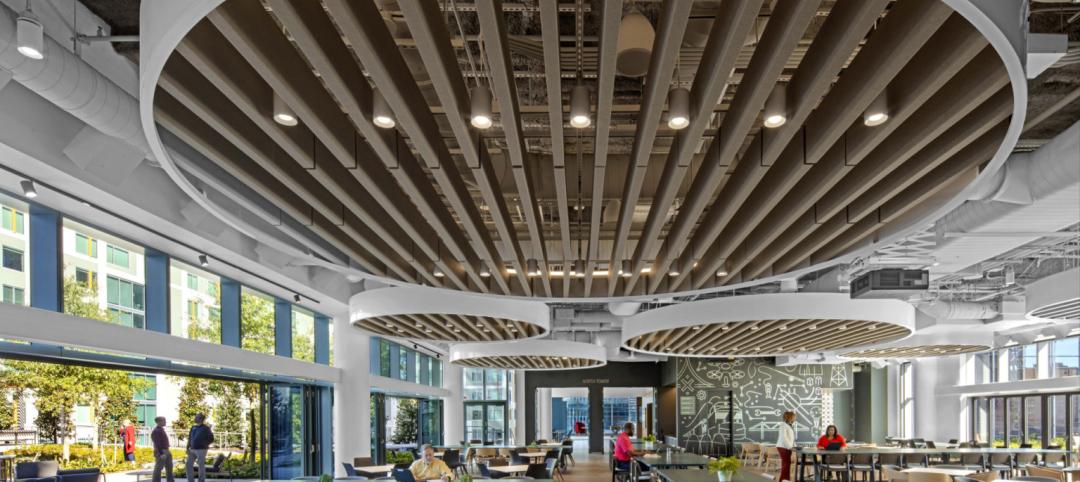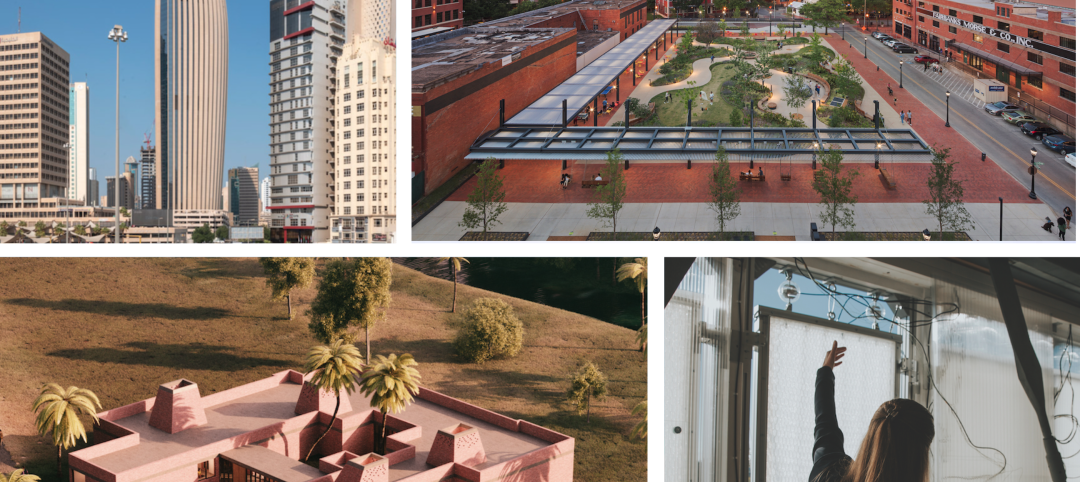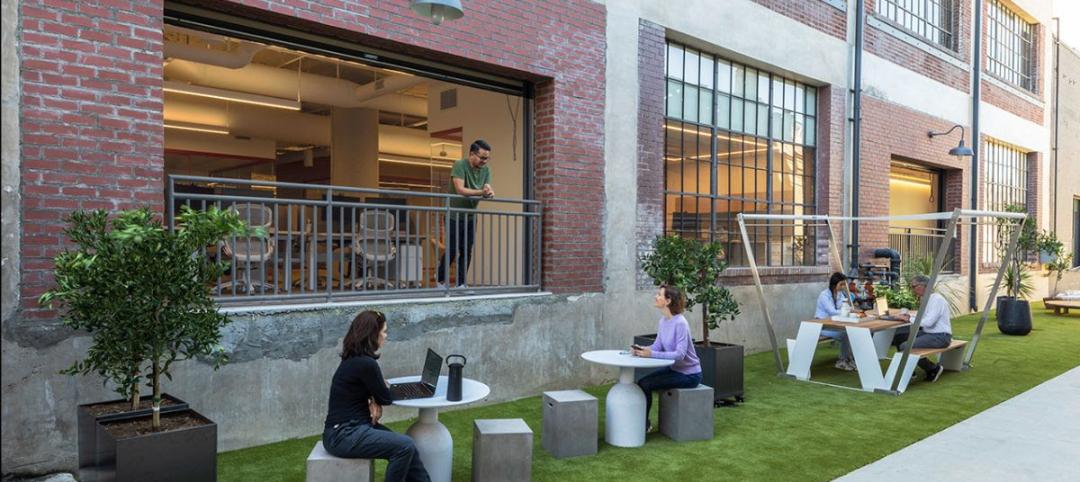Walmart’s new Home Office complex, to be located on 350 acres in Bentonville, Ark., has been designed to combine a creative and innovative work environment that supports the retail giant’s associates, their families, and the greater Northwest Arkansas community. The complex will encompass 12 office buildings, two amenity buildings, parking decks with 1,000 spaces each, an AC Hotel by Marriott, a food hall, biking and walking trails, and other connections to nature via natural lighting, mass timber construction, warm interior finishes, and views of the outdoors.
The Home Office is being built in phases through 2025, and on April 6 Walmart unveiled the final plans and preview of the programming for its two amenities buildings—Walton Family Whole Health & Fitness Center, and The Child Care Center—which have been in the works since 2019 and are scheduled for completion next year.
The 73,000-sf Child Care Center, which PageSoutherlandPage designed, will support up to 500 of Walmart employees’ children, ranging from infants to pre-K. It will be located across the street from the 360,000-sf, 16-acre Walton Family Whole Health & Fitness Center, which will feature three pools, indoor/outdoor tennis courts, volleyball and basketball courts, yoga and other exercise studios.
MUCH MORE THAN A GYM
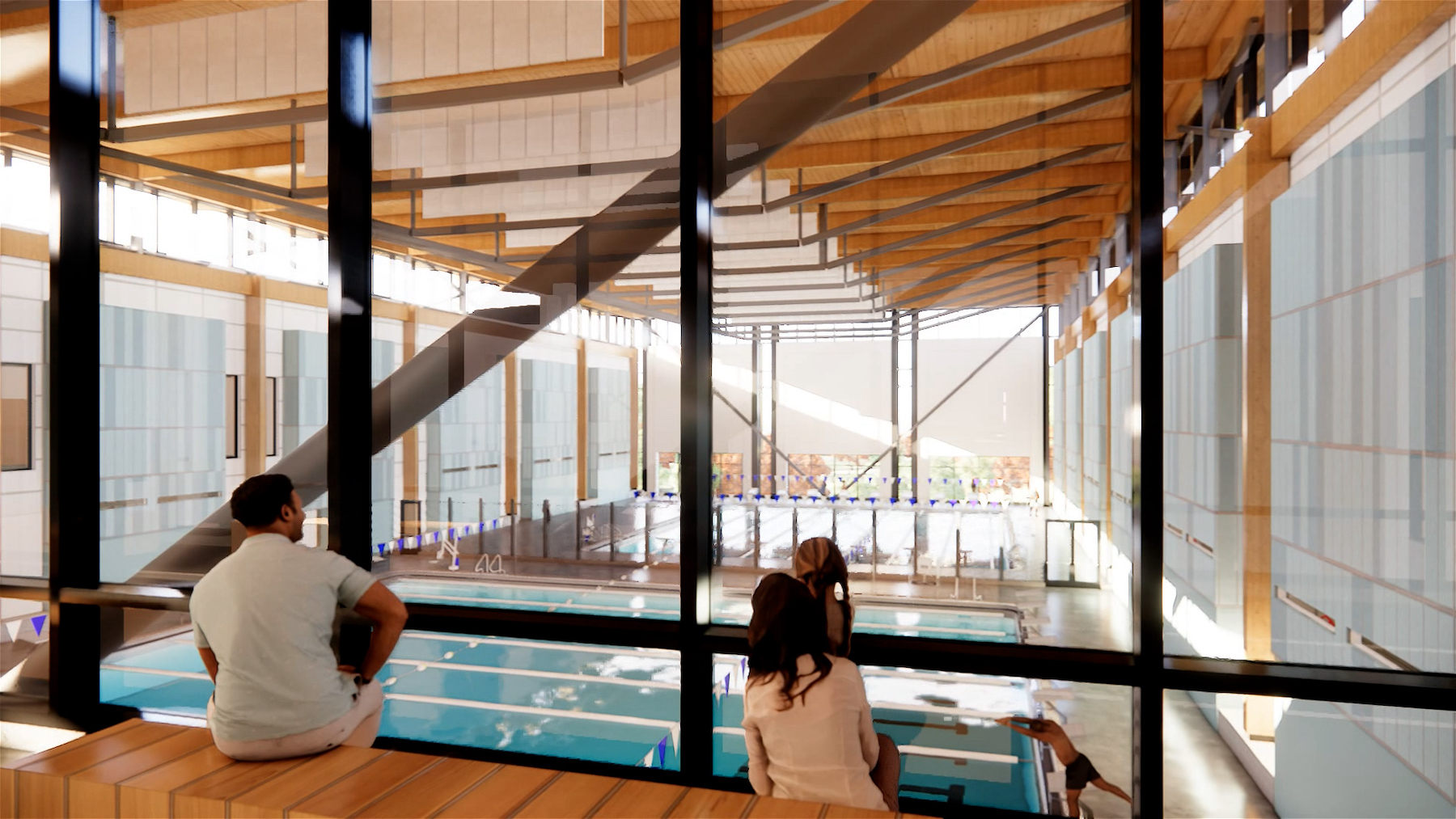
It would be a mistake, though, to think of the Whole Health & Fitness Center simply as a gigantic gym space, says Turan Duda, Founding Partner with Duda|Paine Architects, the North Carolina-based firm that is the architect on the health and fitness facility. Duda notes that from the facility's north and south entrances, associates and other visitors will embark on a “journey” with different pathways that expose the facility’s various “choices” of activities.
The concept for this new campus, Duda explains, was driven by the Walton family, and especially Alice Walton and Whole Health Institute she founded in 2019, which stresses peer-to-peer relationships and interactions. Visibility and transparency are emphasized, but in nonthreatening ways that suggest new wellness avenues to the facility's visitors. For example, acupuncture will be performed in a large room within the facility where other people can watch and evaluate whether such treatment might be right for them.
“Whole health is more of an encompassing concept,” elaborates Walt Cooper, CEO of the Whole Health Institute. “It is purposely designed to give you the opportunity to pause and reflect on what you need most.” He adds that “whole health” addresses physical, mental, emotional, and social factors.
CONNECTING WITH NATURE
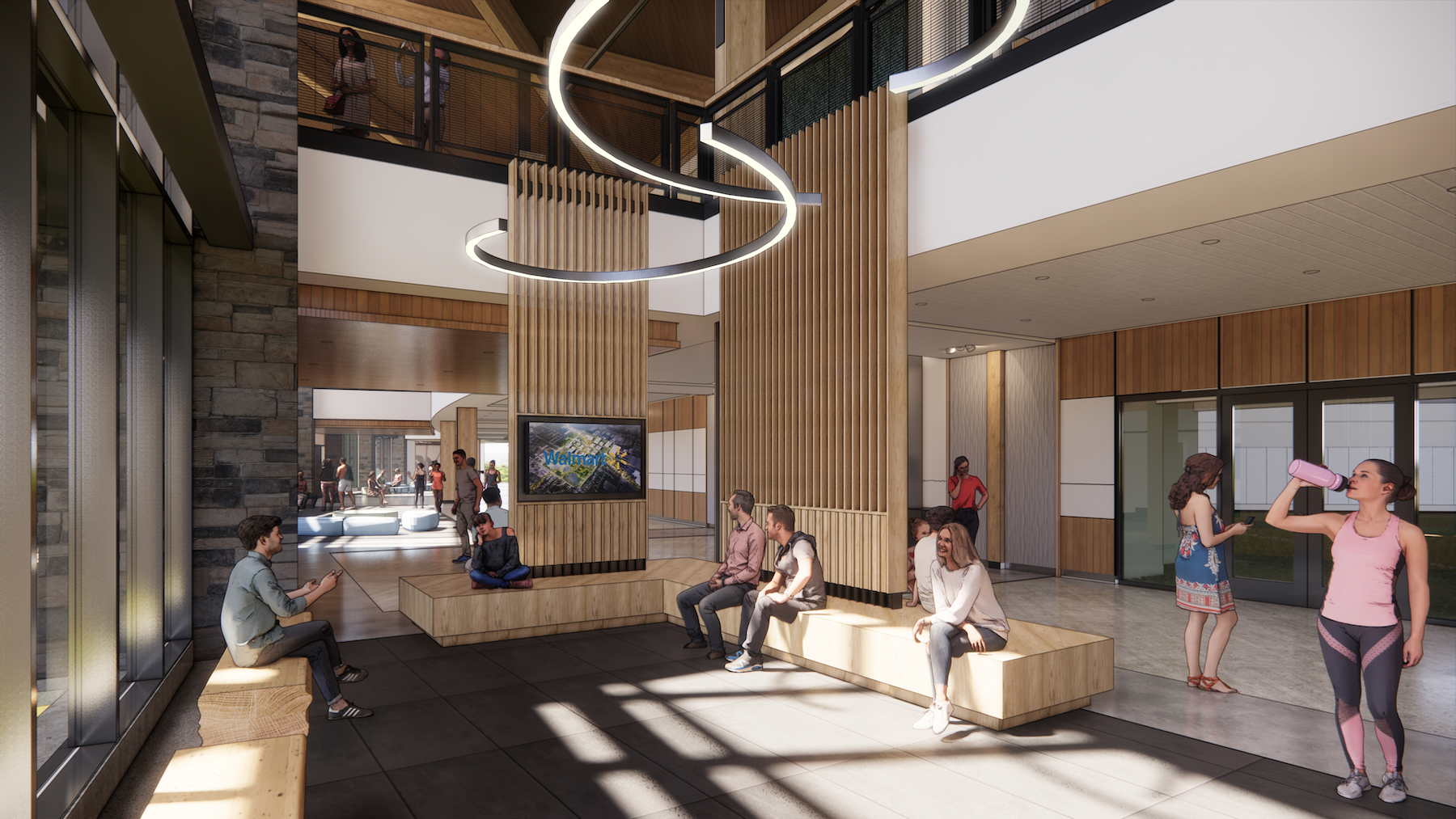
The building’s connection to nature “is a key to its design,” says Amanda Cronick, AIA, LEED Green Assoc., and Associate Principal with Duda|Paine, who oversaw the programming for this project. At the facility's southern porch will be a central space called The Promenade, “where you’ll see all of the choices available,” says Duda. The Promenade is distinguished by its materials (mostly wood), and by “Big Nature,” a giant greenway with water feature that the space looks out onto.
Duda says his firm has learned, from a similar project in Winter Park, Fla., that wellness is “multidimensional” and can encompass everything from dance lessons as an element of marriage counseling, to “wellness pods”—areas for repose and contemplation. A wellness pavilion inside the facility will offer yoga and meditation classes and other amenities such as a kitchen where associates can learn to cook and eat healthier.
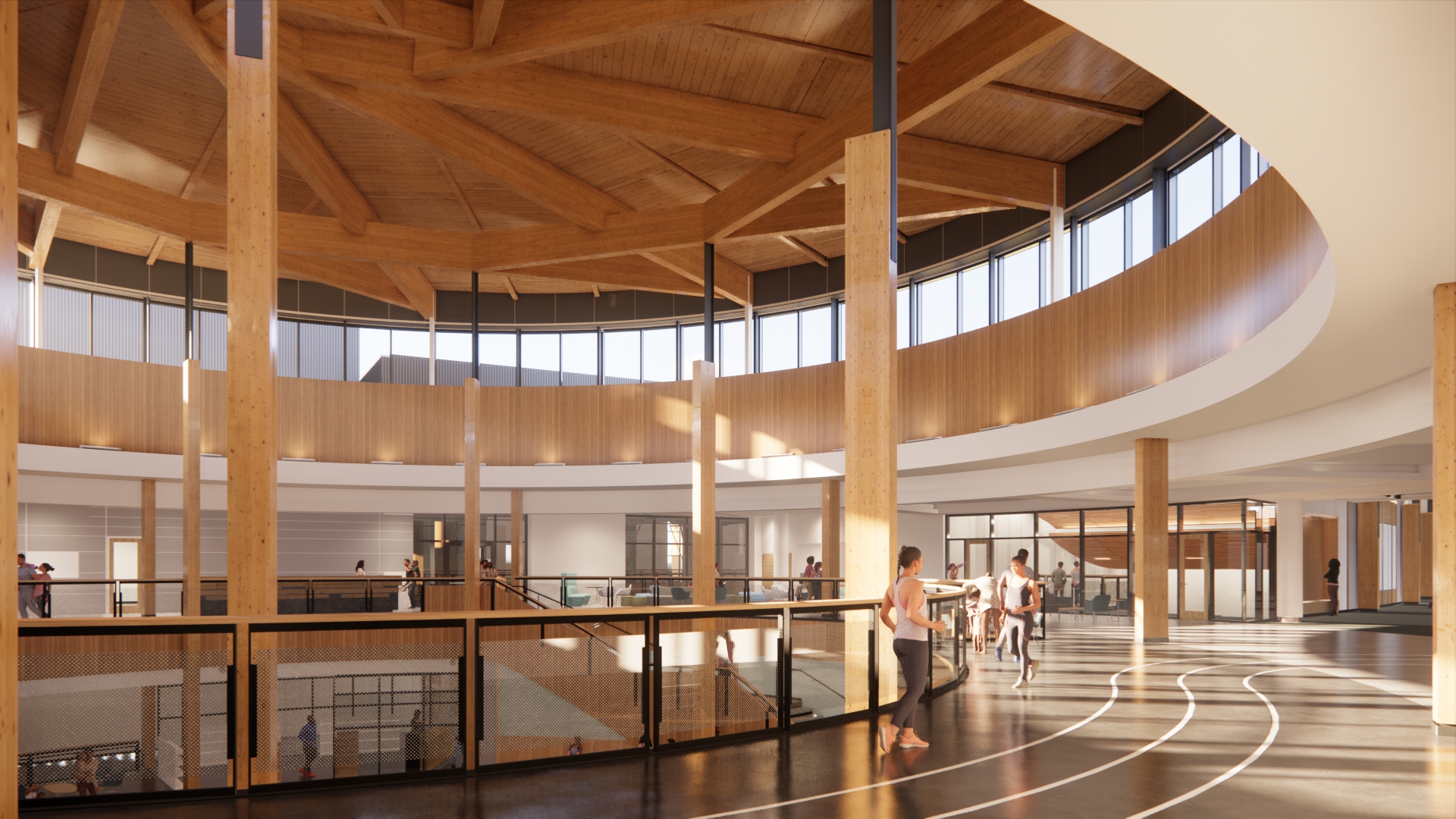
And sometimes, wellness is just about taking a break: The Whole Health & Fitness Center includes a Youth Activity Center where parents can drop off their kids for a few hours while they work out. Summer camps and after-school programs will be available, too.
Along with Duda|Paine Architects, the Building Team for the Home Office includes Gensler (executive architect and LEED coordinator), Arup (MEP), Fast + Epp (SE), Walter P Moore (CE), SWA Group (landscape architect), New Evolution Venture (fitness center design), ISP Design (lighting consultant), ACI (accessibility consultant), SLR International Consultant (acoustical consultant), Aquatic Design Consultants (aquatics consultant), 4b Technology (AV/IT security consultant), Curtain Wall Design & Consulting (building enclosure/waterproofing), Jensen Hughes (code consultant), Ricca Design Studios, Blau + Associates (food service), Lerch Bates (vertical transportation consultant), Willow (BIM coordination), and IES (energy modeling).
Related Stories
Multifamily Housing | May 23, 2023
One out of three office buildings in largest U.S. cities are suitable for residential conversion
Roughly one in three office buildings in the largest U.S. cities are well suited to be converted to multifamily residential properties, according to a study by global real estate firm Avison Young. Some 6,206 buildings across 10 U.S. cities present viable opportunities for conversion to residential use.
Headquarters | May 16, 2023
Workplace HQ for party clothing company Shinesty celebrates its bold, whimsical products
The new Denver headquarters for Shinesty, a party clothing company, was designed to match the brand’s fun image with an iconic array of colors, textures, and prints curated by the design agency, Maximalist. Shinesty’s mission, to challenge the world to live more freely and “take itself less seriously,” is embodied throughout the office interior.
Headquarters | May 15, 2023
The new definition of Class A property
Dan Cheetham, Managing Director and Founder of FYOOG, believes organizations returning to a "hub and spoke" model could have a profound effect on properties once considered Class B.
Headquarters | May 9, 2023
New Wells Fargo development in Texas will be bank’s first net-positive campus
A new Wells Fargo development in the Dallas metroplex will be the national bank’s first net-positive campus, expected to generate more energy than it uses. The 850,000-sf project on 22 acres will generate power from solar panels and provide electric vehicle charging stations.
Office Buildings | May 5, 2023
9 workplace design trends for 2023
HOK Director of WorkPlace Kay Sargent and Director of Interiors Tom Polucci discuss the trends shaping office design in 2023.
Design Innovation Report | Apr 27, 2023
BD+C's 2023 Design Innovation Report
Building Design+Construction’s Design Innovation Report presents projects, spaces, and initiatives—and the AEC professionals behind them—that push the boundaries of building design. This year, we feature four novel projects and one building science innovation.
Office Buildings | Apr 24, 2023
Smart savings: Commissioning for the hybrid workplace
Joe Crowe, Senior Mechanical Engineer, Gresham Smith, shares smart savings tips for facility managers and building owners of hybrid workplaces.
Design Innovation Report | Apr 19, 2023
Reinforced concrete walls and fins stiffen and shade the National Bank of Kuwait skyscraper
When the National Bank of Kuwait first conceived its new headquarters more than a decade ago, it wanted to make a statement about passive design with a soaring tower that could withstand the extreme heat of Kuwait City, the country’s desert capital.
Office Buildings | Apr 13, 2023
L.A. headquarters for startup Califia Farms incorporates post-pandemic hybrid workplace design concepts
The new Los Angeles headquarters for fast-growing Califia Farms, a brand of dairy alternative products, was designed by SLAM with the post-Covid hybrid work environment in mind. Located in Maxwell Coffee House, a historic production facility built in 1924 that has become a vibrant mixed-use complex, the office features a café bordered by generous meeting rooms.
Architects | Apr 6, 2023
New tool from Perkins&Will will make public health data more accessible to designers and architects
Called PRECEDE, the dashboard is an open-source tool developed by Perkins&Will that draws on federal data to identify and assess community health priorities within the U.S. by location. The firm was recently awarded a $30,000 ASID Foundation Grant to enhance the tool.


